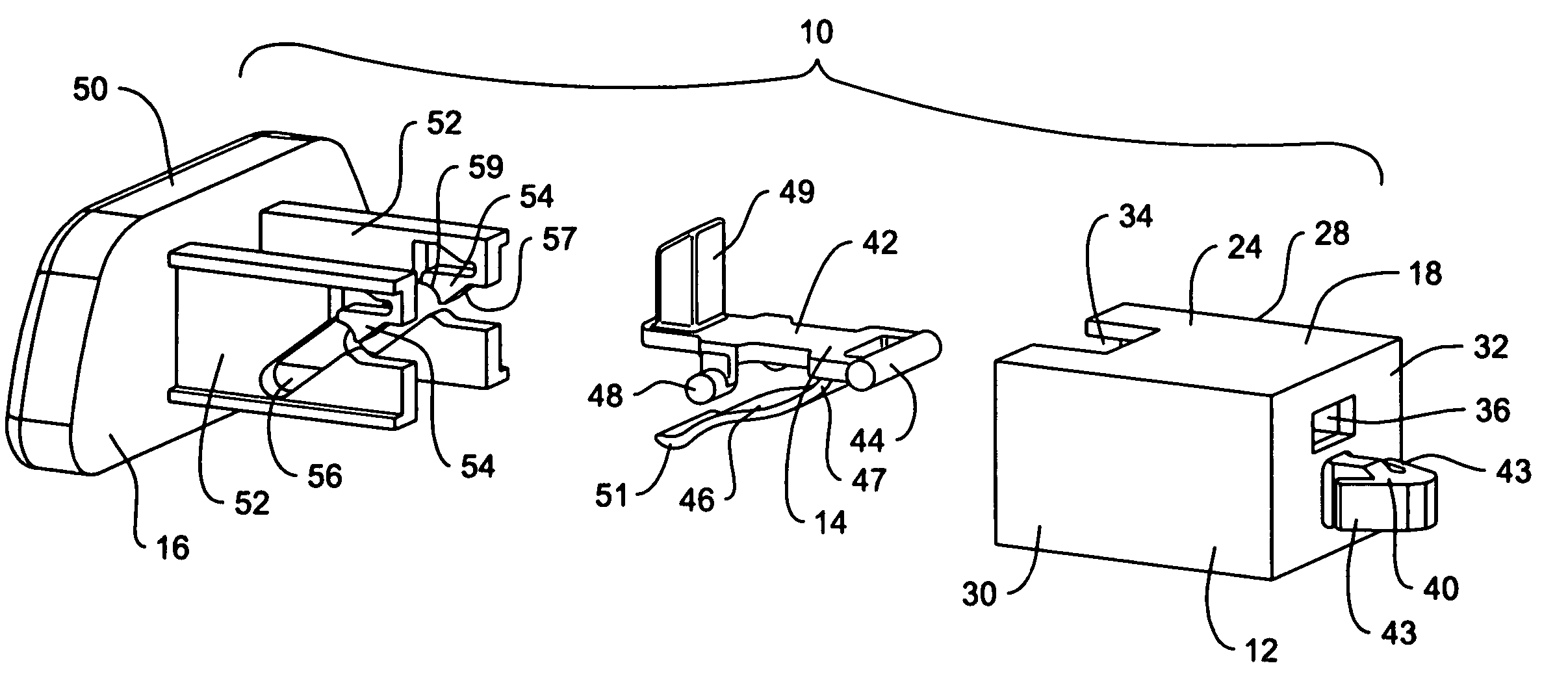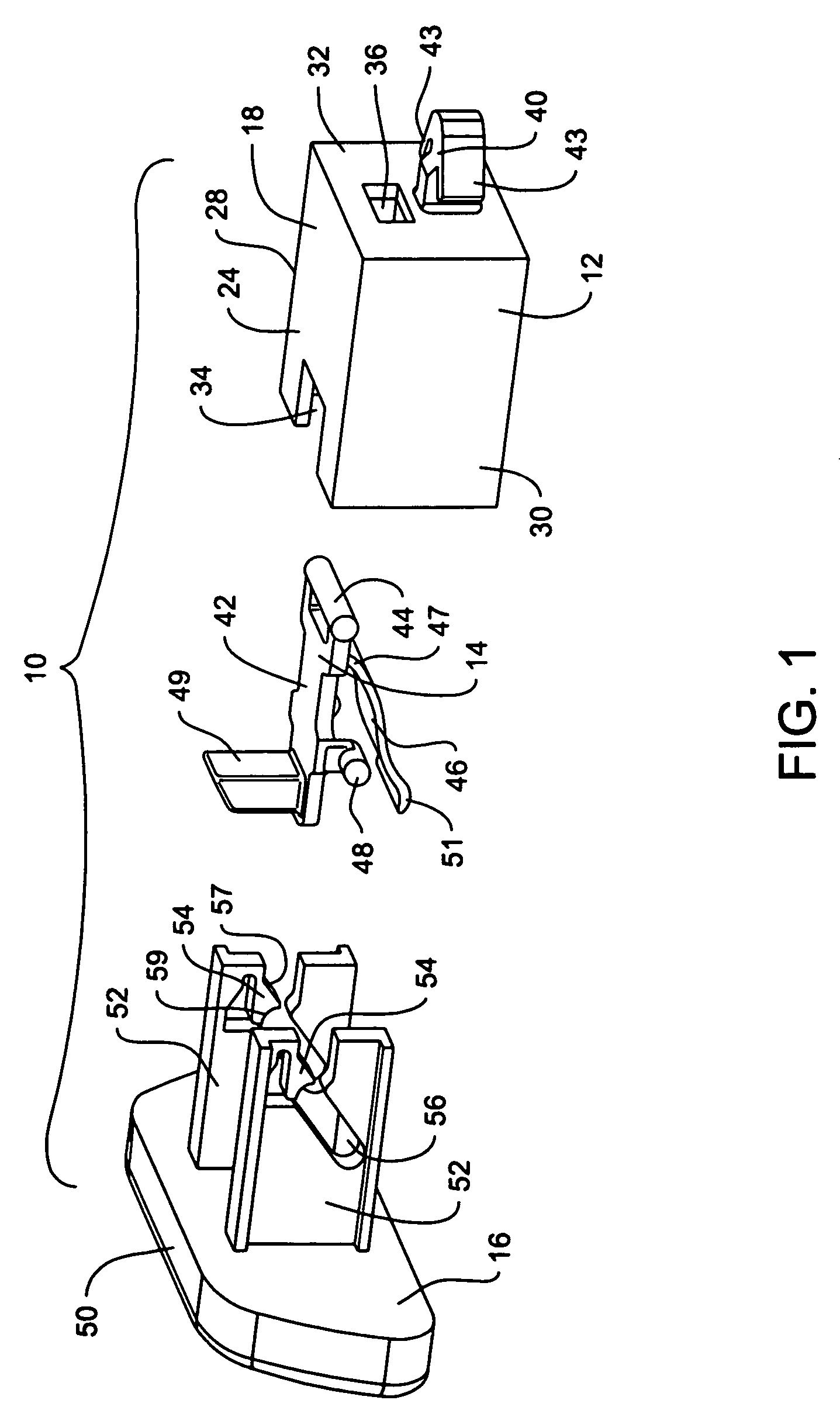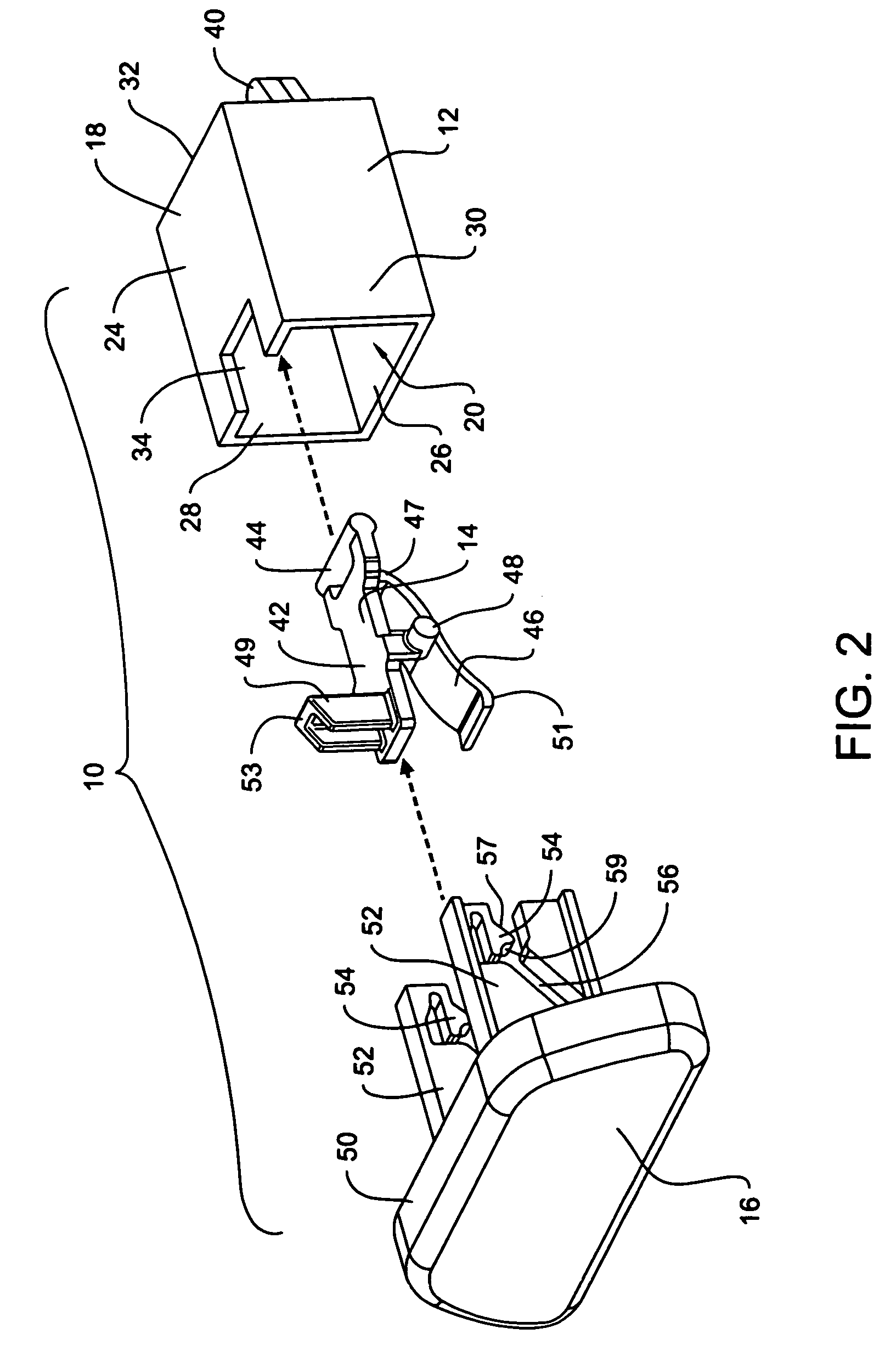Push latch
a technology of push latches and latches, which is applied in the field of push latches, can solve the problems of requiring the assembler to start all, affecting the assembly efficiency of the assembly, so as to improve the assembly efficiency, and reduce the number of components
- Summary
- Abstract
- Description
- Claims
- Application Information
AI Technical Summary
Benefits of technology
Problems solved by technology
Method used
Image
Examples
Embodiment Construction
[0020]Referring to FIGS. 1 and 2, an exploded view of an exemplary embodiment of the push latch 10 of the invention is depicted and includes an exemplary housing 12, a lock 14, and a button 16. The structure and relationship of these exemplary components are described below. The exemplary housing 12 defines a box shaped housing body 18 made from a plastic or other suitable material. The housing body 18 forms a cavity 20 defined by a top wall 24, a bottom wall 26, a first side wall 28, a second side wall 30, and a back wall 32. The top wall further defines a notch 34 through which extends a lock boss 49, as described below. The back wall 32 defines an opening 36. Referring to FIG. 3a, positioned on opposing sides of the opening 36 and extending into the cavity 20 are snaps or flexible retaining members 38. The snaps 38 serve to mount the lock 14 to the housing, as described below, and permit pivotal movement of the lock 14 within the housing. The snaps 38 extend in a generally parall...
PUM
 Login to View More
Login to View More Abstract
Description
Claims
Application Information
 Login to View More
Login to View More - R&D
- Intellectual Property
- Life Sciences
- Materials
- Tech Scout
- Unparalleled Data Quality
- Higher Quality Content
- 60% Fewer Hallucinations
Browse by: Latest US Patents, China's latest patents, Technical Efficacy Thesaurus, Application Domain, Technology Topic, Popular Technical Reports.
© 2025 PatSnap. All rights reserved.Legal|Privacy policy|Modern Slavery Act Transparency Statement|Sitemap|About US| Contact US: help@patsnap.com



